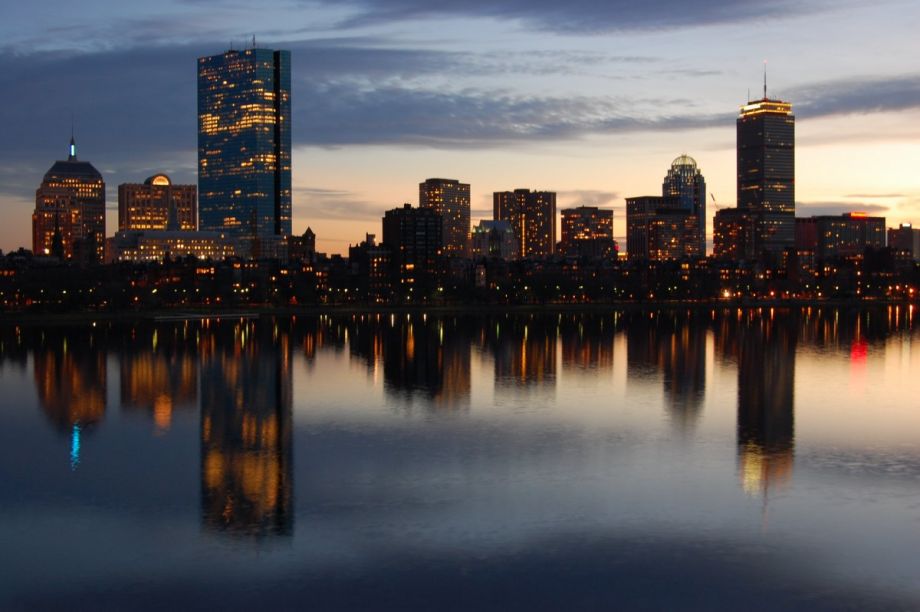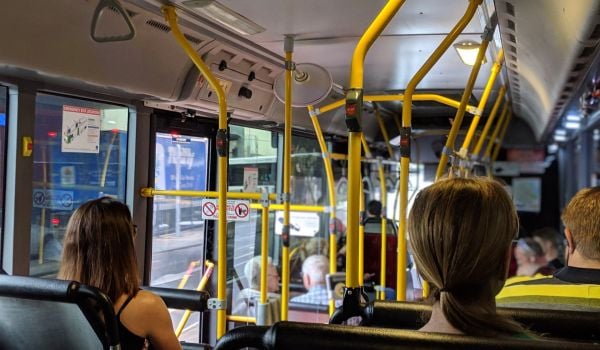Our weekly “New Starts” roundup of new and newsworthy transportation projects worldwide.
Greater Boston Moves to Turn Its Commuter Rail Network into a Regional Rail Network
Regular readers of this column may note its author’s preference for the term “regional rail” over “commuter rail” to describe rail transit systems that provide service to distant suburbs of large cities. It’s a preference based more on hope than experience, at least in North America, but it’s also derived from the fact that he lives in one of the few North American cities whose suburban rail services operate at regular intervals throughout the day (and well into the night) in both directions and more frequently at peak hours. That city is Philadelphia, where the Southeastern Pennsylvania Transportation Authority uses the term to describe its commuter rail network.
It’s also one of only two cities in North America whose commuter trains run through rather than to the heart of the city (the other is Toronto).
On Monday, Nov. 4, the Massachusetts Bay Transportation Authority voted to make New England’s largest metropolis the third such city.
As reported in The Daily Item of Lynn, MA, the MBTA Fiscal Management and Control Board voted unanimously to electrify the entire MBTA Commuter Rail network and purchase electric multiple-unit passenger coaches to operate service on the electrified lines. While the article does not specify which of the electrification options the agency chose to pursue, its language suggests that the board voted to approve the sixth and most ambitious of the six options for improving Boston’s commuter rail network: full electrification of the entire system, creation of “urban rail” lines in selected corridors, and construction of the North Station-South Station Rail Link.
Total price tag for this option: $28.9 billion, or $40.7 billion in 2030 dollars.
That latter figure reflects the total timeline for completing the entire transformation. But a second unanimous vote indicates that the MBTA intends to get a jump start on the project.
That vote was to designate three corridors — the Newburyport/Rockport, Fairmount, and Providence/Stoughton routes — as the first to be upgraded to what the MBTA calls “urban rail.” This near-rapid-transit service would see trains operating at headways of 15 minutes or less throughout the day and fares set at lower rapid-transit levels.
According to that sixth option, this service would operate as far as Beverly on the Newburyport/Rockport line, Route 128 on the Providence/Stoughton line and the entirety of the Fairmount line.
Lynn Mayor Thomas McGee, former chairman of the Massachusetts Legislature’s Joint Committee on Transportation, told the Item, “[The MBTA board] made a major statement today that they’re going to accept a regional rail system and electrification is a major part of it. Thinking big and bold is what the region needs to grow our economy and allow access to everyone who sits near or can access the commuter rail system.
“The infrastructure is in place, but it really is a 19th-century system with 21st-century needs along the corridor, and this is a big step toward a 21st-century system that will work for everyone. This is a big deal.”
The soonest any of the lines could see electric rail service is five years from now, but members of the North Shore’s legislative delegation said in the article that they believed the near-rapid-transit service could begin sooner than that.
This move would actually fulfill a broken promise to North Shore residents: that of rapid transit service to Boston. The partially-completed 1960s plan to extend Boston’s subway network into its middle suburbs called for the Blue Line to be extended to Lynn.
Once fully realized, these moves would make Boston the first city in North America with the kind of regional rail service commonly found in Europe’s largest cities. SEPTA, please copy.
Angelenos Can Now “Take the A Train” (Once Again)
A Los Angeles County Metropolitan Transportation Authority press release posted on Mass Transit heralded the reopening of the Los Angeles-Long Beach Blue Line on Nov. 2.
That reopening came with a renaming as well: Henceforth, the light metro line will be known as the A Line.
The Nov. 2 ribbon-cutting ceremony marked the completion of the last leg of a $350 million project to bring the first of LA’s modern rail transit lines up to 21st-century snuff. The upgrade includes new crossover switches, a new power supply, upgraded train controls, new track, and better wayfinding and signage.
It also includes digital interactive touch screens at the stations from Long Beach to Compton. More than 100 screens at these stations will allow riders to get more and more accurate information about train and bus arrivals, delays and service alerts, and system and neighborhood maps. In addition, the screens will also display digital art portraits and ads that cover the cost of installing and operating the screens.
Both the new screens and the new naming convention for LA’s rail transit lines will be rolled out systemwide over the coming years. The new naming convention was adopted both to give the rapid transit lines consistent names and to help color-blind passengers navigate the system. Colors will continue to be used to identify lines but will no longer serve as names for them.
Under the new system, which will be implemented over the next three years, the Blue Line becomes the A Line, the Red Line will become the B Line, the Green Line will become the C Line, the Purple Line will become the D Line and the Expo Line will become the E Line. The Gold Line from Union Station to Pasadena will become the J Line until the downtown connector subway is completed, at which point the segment to Asuza will run through to Long Beach as part of the A Line and the East LA section will join with the Expo Line as part of the E Line. The new convention will be fully implemented when the Crenshaw/LAX line opens; it has yet to be assigned a letter. In addition, no letter was announced for the Orange Line bus rapid transit in the San Fernando Valley.
Aerial Tram Will Connect Russian, Chinese Cities
Metro Report International reports that Poma has been selected to build an aerial cable car line between Russia and China.
The 973-meter (0.6-mile) line across the River Amur will connect the cities of Blagoveshchensk in Russia’s Amur Oblast with Heihe in China’s Heilongjiang province. Customs and border controls will take place inside the aerial tram stations, which will be designed by UNStudio. Four 60-passenger cars will give the line a carrying capacity of 450 passengers per hour; the trip across the river will take six minutes. The line is scheduled to open in the second half of 2022, and ridership is projected to reach 1 million passengers annually by 2024. Amur Oblast Governor Vasily Orlov praised the line, saying it would help develop business and tourism in the region.
Malaysia Kicks Cross-Strait Metro Can a Little Further Down the Road
News flash: Malaysia has asked Singapore to extend the hold on the planned metro line across the Straits of Johor for another six months.
Metro Report International reports that the government of Singapore agreed to Malaysia’s Oct. 29 request for another six-month hold on work on the project. Eight days earlier, Malaysia requested changes to the project specifications but has not yet given specifics of the changes to Singapore. Any changes to the project would require amendments to the bilateral agreement to build the Singapore-Johor Bahru metro line last year.
“While we are not obliged to accept Malaysia’s proposed changes, we will continue to keep an open mind and assess them carefully and objectively,” Singapore Minister for Transport Khaw Boon Wan told MRI.
Check back here in April for further (non-)developments.
Know of a project that should be featured in this column? Send a Tweet with links to @MarketStEl with the hashtag #newstarts.

Next City contributor Sandy Smith is the home and real estate editor at Philadelphia magazine. Over the years, his work has appeared in Hidden City Philadelphia, the Philadelphia Inquirer and other local and regional publications. His interest in cities stretches back to his youth in Kansas City, and his career in journalism and media relations extends back that far as well.
Follow Sandy .(JavaScript must be enabled to view this email address)







_920_518_600_350_80_s_c1.jpg)








